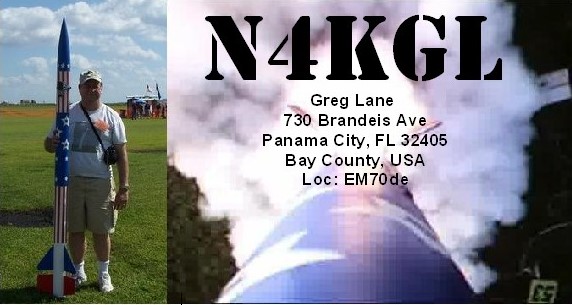It is hard to beat the view I had at Frank Jackson State Park near Opp, Alabama. Linda and I spent five nights in our camping trailer there. My shack was a table with a full view of the lake. I used the Icom IC-705 with the Elecraft KXPA100 Amplifier. I had room for the SOTABeams 40-30-20 Bandhopper link dipole. I also set up the N6BT Bravo 7K vertical right by the water.
 |
| My shack on Lake Jackson |
Jim KC4HW also spent several nights at the same park. Jim and I went over to the SEARS Rocket launch on Saturday in nearby Samson. It was a banner day of launches with some high power two-stage rockets going up. I launched my Totally Tubular Crayon Rocket.
 |
| Jim KC4HW and Suzy next to the Totally Tubular Rocket |
Radio-wise activating a park for Parks On The Air gave us lots of contacts. On Sunday, I had ninety-seven POTA contacts including a string on seventy on 20 SSB. Fortunately, Jim helped with the logging. Jim has some interest in POTA for his camping trips in the future.
 |
| The Bravo 7K Vertical lakeside. It did well into Canada and the West Coast on 20 meters. |
There is an island within the Frank Jackson Lake. It is named Memorial Island and is AL021L in the US Islands Directory. On Tuesday, Suzy and I went across the boardwalk to the island. The spot we picked was already taken by an armadillo but he eventually moved on. I used the Icom IC-705 at ten watts. We gave out the POTA number and the US Island number. On 20 SSB, I had fifteen contacts including one with our buddy Chris VA3ECO who was operating his remote station from an island in Ontario. On 40 SSB we also had fifteen contacts including one with my buddy Bob KK4DIV who was camping at the Ocala State Forrest.
 |
| Our setup on Memorial Island, USI AL021L |
We enjoyed the beautiful scenery and got a good dose of rockets and radio on this visit. Jim treated us to burgers on Sunday night and gave me some camping and radio tips. I was glad to get to know Jim better. He lives near Slocumb, Alabama not far from Dothan. So this was nice camping for December. I put in a reservation for May of next year. On that camping trip, I can return to Memorial Island for the US Islands One-Day-Getaway event on May 8th.
73,
Greg N4KGL


























.jpg)










